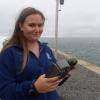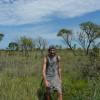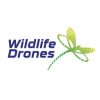Camera traps have been a key part of the conservation toolkit for decades. Remotely triggered video or still cameras allow researchers and managers to monitor cryptic species, survey populations, and support enforcement responses by documenting illegal activities. Increasingly, machine learning is being implemented to automate the processing of data generated by camera traps.
A recent study published showed that, despite being well-established and widely used tools in conservation, progress in the development of camera traps has plateaued since the emergence of the modern model in the mid-2000s, leaving users struggling with many of the same issues they faced a decade ago. That manufacturer ratings have not improved over time, despite technological advancements, demonstrates the need for a new generation of innovative conservation camera traps. Join this group and explore existing efforts, established needs, and what next-generation camera traps might look like - including the integration of AI for data processing through initiatives like Wildlife Insights and Wild Me.
Group Highlights:
Our past Tech Tutors seasons featured multiple episodes for experienced and new camera trappers. How Do I Repair My Camera Traps? featured WILDLABS members Laure Joanny, Alistair Stewart, and Rob Appleby and featured many troubleshooting and DIY resources for common issues.
For camera trap users looking to incorporate machine learning into the data analysis process, Sara Beery's How do I get started using machine learning for my camera traps? is an incredible resource discussing the user-friendly tool MegaDetector.
And for those who are new to camera trapping, Marcella Kelly's How do I choose the right camera trap(s) based on interests, goals, and species? will help you make important decisions based on factors like species, environment, power, durability, and more.
Finally, for an in-depth conversation on camera trap hardware and software, check out the Camera Traps Virtual Meetup featuring Sara Beery, Roland Kays, and Sam Seccombe.
And while you're here, be sure to stop by the camera trap community's collaborative troubleshooting data bank, where we're compiling common problems with the goal of creating a consistent place to exchange tips and tricks!
Header photo: ACEAA-Conservacion Amazonica
Careers
Job opening at ARISE, an innovative program in the Netherlands to build a digital infrastructure for biodiversity data and services
19 August 2022
Are you creative, love new challenges and have experience developing software? The Wildlife Insights team is hiring! Join a diverse team of ecologists, data scientists, engineers and machine learning experts to protect...
10 August 2022
Press Release for International Tiger Day – July 29th, 2022: For the first time ever, wild tigers and their prey have been detected by AI-powered, cryptic cameras that transmit the images to the cell phones and...
5 August 2022
Careers
WCS Canada is seeking a Data Technician with a keen eye for detail to support its Wolverine Conservation Program. The Data Technician will be responsible for classifying wildlife photos taken with motion-sensor cameras...
29 July 2022
Two postdoc positions are now accepting applications for an NSF-funded project integrating data from museums, iNaturalist, and camera trapping data from the Snapshot USA annual survey.
11 July 2022
Careers
The Survey Coordinator is a 3 year role that will assist Program Managers in recruiting. training and retaining participants in a nation-wide camera trapping program
9 June 2022
Microchip has just announced the 1 GHz SAMA7G54 single-core Arm Cortex-A7 microprocessor (MPU) with MIPI CSI-2 and parallel camera interfaces, as well as up to four I2S, one SPDIF transmitter and receiver, and a 4-...
3 June 2022
30 May 2022
Check out this round-up of three of the latest conservation tech studies and news. See more conservation tech news by subscribing to our bi-monthly digest.
24 March 2022
We're proud to introduce the first WILDLABS On the Edge Fellows for 2022, Loretta Schindlerova and Meredith Palmer! Working alongside expert Edge Impulse mentors, these two fellows will use embedded machine learning to...
10 February 2022
This article argues for a conservation method that integrates monitoring technology and community knowledge. Focusing on pangolins, the most trafficked animals globally, the study combines camera trap data from the...
20 December 2021
May 2024
event
October 2024
April 2024
event
Camera Trap storage and analyzing tools
16 April 2024 5:15pm
Thinking About Getting Started in a Career in Conservation Technology with Vainess Laizer
 Esther Githinji
Esther Githinji
16 April 2024 1:34pm
Using the multivariate Hawkes process to study interactions between multiple species from camera trap data
15 April 2024 3:00pm
"We present the multivariate Hawkes process (MHP) and show how it can be used to analyze interactions between several species using camera trap data."
Integrating AI models with camera trap management applications
25 March 2024 7:47pm
9 April 2024 1:37am
Would also add zamba and Zamba Cloud into the list of tools for running AI models (the former being with Python code, the latter being with a GUI). For the reader at home (since I know Dan knows), these are tools for species classification on camera trap videos. We've got pretrained models trained on over 250,00 videos covering 32 African forest species, 11 European species, as well as a blank / nonblank detector.
There is also the ability to train your own models for new species or locations. And we're super excited to extend this custom model training functionality to support camera trap images thanks to our WILDLABS award (more details here).
13 April 2024 4:47am
Thanks Dan for explaining and clarifying, and Ed and all others for contributing. As a somewhat technical person (IT business consultant) with no formal environmental education, but with a passion to understand and protect the environment, this is a topic I've been exploring and struggling with...
There are really skilled technical experts in this community that love to design and improve solutions, but it's not always easy for potential end users to understand and use said solutions without significant learning curves. And often solutions are designed from a technical perspective, and does not always consider end users' level of experience, knowledge and actual on the ground needs. This is not just a problem in the concervation technology space, but overall tech industry.
To clarify this for myself, I would love to see a summary of how conservation tech solutions fit into a camera trap process that include the following areas - and especially which tools fit where:
- Plan/Design: scope, requirements, timeframes, data needs, overall outcome. Also influences the selection of tools to use in the overall process.
- Capture/execute : both hardware (cameras, audio recorders, sensors, etc), and software (managing hardware lifecycle tracking, capturing trail camera data e.g. image file management, etc) solutions
- Process/Analyse: solutions for initial processing/culling, detailed analysis, and anything classification related
- Present/Display: how best to communicate, display and present the data gathered, analysed and classified...
If there is a resource that already do this comparison and sumarization of tools' capabilities please help me find it - otherwise it might be topic to be explored further...
14 April 2024 7:46pm
Saul Greenberg is a great guy! He has made a few very useful videos regarding the Timelapse/Megadetector integration:
and a tutorial:
https://saul.cpsc.ucalgary.ca/timelapse/uploads/Videos/Video-TimelapseImageRecognitionGuide.mp4
Research Assistant, Lion Landscapes in Nanyuki
11 April 2024 9:49am
WILDLABS AWARDS 2024 - No-code custom AI for camera trap species classification
5 April 2024 7:00pm
7 April 2024 9:03pm
Congratulations with the grant! I am looking much forward to seeing the result of your project!
8 April 2024 5:29pm
Hi Michelle! Right now we're focused on species identification rather than counts of animals.
When you say timelapse images, is this a certain format like bursts? Curious to understand more about your data format
10 April 2024 3:55am
Happy to explain for sure. By Timelapse I mean images taken every 15 minutes, and sometimes the same seals (anywhere from 1 to 70 individuals) were in the image for many consecutive images.
Comparing local ecological knowledge with camera trap data to study mammal occurrence in anthropogenic landscapes of the Garden Route Biosphere Reserve
9 April 2024 7:09pm
Combining camera traps and online surveys provided a more comprehensive understanding of mammal communities in anthropogenic landscapes, increasing both spatial coverage and the number of species sightings.
Using drones and camtraps to find sloths in the canopy
18 July 2023 7:39pm
26 January 2024 8:58am
I took delivery of the DJI Mavic Enterprise 3 Thermal the other day. The short hand nomenclature used on the controller for the thermal imagery is "IR" (short for infrared) so it is used even for cases where no IR lighting is in play.
6 April 2024 11:20pm
After reading through the backlog of comments, I had a thought triggered by the mention of security cameras. Some security cameras don't get triggered by the usual PIR sensor, but by changes in the image in pre-set zones. I have a Bosch Binion starlight camera I was playing with and it worked this way. The area of the trigger zones could be adjusted once you had the camera set up and viewing the monitoring area. It wouldn't matter how slow the sloth moved, when it moved into the zone and changed the image, the camera would trigger. I assume sensitivity could be adjusted so you didn't get a trigger every time a leaf moved in the wind.
7 April 2024 8:21pm
That sure sounds interesting! Thank you for your input, @Colin_Cook
Online training workshop: camera trap distance sampling, 27-31 May 2024.
6 April 2024 4:00am
Mammal responses to global changes in human activity vary by trophic group and landscape
3 April 2024 4:52pm
These researchers used camera trapping as a lens to view mammal responses to changes in human activity during the COVID-19 pandemic.
EcoAssist - Free AI models for camera traps photos identification
3 April 2024 7:16am
Blind Spots in Conservation Tech Management in Remote Landscapes: Seeking Your Input
20 March 2024 10:51am
22 March 2024 9:48am
Hi @lucianofoglia
Thanks for sharing your thoughts with the community. What you've touched on resonates with a number of users and developers (looking at you @Rob_Appleby) who share similar concerns and are keen to address these issues.
As a beliver in open sourcing conservation technologies, to mitigate issues you've noted (maintenance of technologies / solutions, repairability, technical assistance to name but a few), really the only way to achieve this in my eyes is through the promotion of openness to enable a wide range of both technical and non-technical users to form the pool of skills needed to react to what you have stated. If they can repair a device, or modify it easily, we can solve the waste issue and promote reusability, but first they need access to achieve this and commerical companies typically shy away from releasing designs to protect against their IP that they keep in house to sell devices / solutions.
I would think for an organisation to achieve the same the community would need to help manufacturers and developers open and share hardware designs, software, repairability guides etc, but the reality today is as you have described.
One interesting conversation is around a kitemark, i.e a stamp of approval similar to the Open Source Hardware Association's OSHWA Certification), but as it's not always hardware related, the kitemark could cover repairability (making enclosure designs open access, or levels of openness to start to address the issue). Have a look at https://certification.oshwa.org/ for more info. I spent some time discussing an Open IoT Kitemark with http://www.designswarm.com/ back in 2020 with similar values as you have described - https://iot.london/openiot/
You may want to talk more about this at the upcoming Conservation Optimism Summit too.
Happy to join you on your journey :)
Alasdair (Arribada)
30 March 2024 3:57pm
Hi @Alasdair
Great to hear from you! Thanks for the comment and for those very useful links (very interesting). And for letting @Rob_Appleby know. I can't wait to hear from her.
Open source is my preference as well. And it's a good idea. But, already developing the tech in house is a step ahead from what would be the basic functional application of an organization that could manage the tech for a whole country/region.
I have witnessed sometime how tech have not added much to the efficiency of local teams but instead being an tool to promote the work of NGOs. And because of that then innovative technologies are not developed much further that a mere donation (from the local team's perspective). But for that tech to prove efficient, a lot more work on the field have to be done after. The help of people with expertise in the front line with lots of time to dedicate to the cause is essential (this proves too expensive for local NGOs and rarely this aspect is consider).
I imagine this is something that needs to come from the side closer to the donors and International NGOs. Ideally only equipment can be lend within a subscription model and not just donated without accountability on how that tech is use. Effectively the resources can be distributed strategically over many projects. Allowing to tech to be repurposed.
Sorry that I step down the technical talk, the thing is that sometimes the simplest things can make the most impact.
It would be good to know if any in the community that have spent considerable time working in conservation in remote regions, and have observed similar trends.
Thanks! Luciano
Applying Open-Source AI to Camera Trap Imagery
27 March 2024 4:34pm
How does behavior influence the use of technology for animal detection ?
22 March 2024 7:49pm
The Variety Hour: 2024 Lineup
22 March 2024 4:30pm
2 Postdoctoral Conservation Ecologist Positions at Smithsonian’s National Zoo and Conservation Biology Institute (SNZCBI)
 Smithsonian Institution
Smithsonian Institution
14 March 2024 7:18pm
Using citizen science image analysis to measure seabird phenology
13 March 2024 9:32pm
Our new paper uses data from the citizen science project, Seabird Watch (hosted on the Zooniverse platform; seabirdwatch.org), to measure seabird phenology. Volunteers marked birds in time-lapse images to investigate arrival and departure to/from the breeding grounds.
Free AI Camera Trap Model for European Fauna!
12 March 2024 12:33pm
EcoAssist has now incorporated the Deepfaune v1.1 species identification model for camera trap images, capable of recognizing 26 European species. The model is developed by Deepfaune initiative. More information is available at: https://www.deepfaune.cnrs.fr/.
Here's what you missed at World Wildlife Day 2024
7 March 2024 9:02pm
15 March 2024 2:42pm
EcoAssist - Free African species identification model for 30 species!
5 March 2024 5:10pm
1 April 2024 6:04pm
Canopy Camera Trap for Indonesian Lizards
27 February 2024 9:20pm
28 February 2024 1:18pm
Hi Andrew! Great to hear your friend, Scott working in Indonesia! I bet he is working on east region with lot of cool monitor lizards!
I use Mavic 2 as well for my crocodile research in place with dense canopy and yes it was tricky! I would suggest to try DJI Avata may be better to do this task. Or maybe try equip propeller guard on the Mavic?
Would be it possible for the drone setting up the rope and after that the camera lift up using rope and slap to your desire place? just an idea, but in OZ they use drone carrying long rope to caught the crocodile, when it caught, the drone will release the rope and shift to people to work.
Pytorch-Wildlife: A Collaborative Deep Learning Framework for Conservation (v1.0)
21 February 2024 10:30pm
25 February 2024 2:15am
Thanks Dan! I did actually, after giving up using PyTorch and it was amazing!
26 February 2024 7:38pm
Hello @hjayanto , You are precisely the kind of collaborator we are looking to work with closely to enhance the user-friendliness of Pytorch-Wildlife in our upcoming updates. Please feel free to send us any feedbacks either through the Github issue or here! We aim to make Pytorch-Wildlife more accessible to individuals with limited to no engineering experience. Currently, we have a Huggingface demo UI (https://huggingface.co/spaces/AndresHdzC/pytorch-wildlife) to showcase the existing functionalities in Pytorch-Wildlife. Please let us know if you encounter any issues while using the demo. We are also in the process of preparing a tutorial for those interested in Pytorch-Wildlife. We will keep you updated on this!
26 February 2024 11:58pm
This is great, thank you so much @zhongqimiao ! I will check it out and looking forward for the upcoming tutorial!
Timelapse Infrared Camera Suggestions
14 February 2024 1:54am
24 February 2024 6:18am
I doubt there is an off the shelf solution. Likely you will have to build one. Again I think the FLIR leptons could be of value here.
@krasi_georgiev you have worked with Leptons before ? Is this something you are able to advise on ?
25 February 2024 1:11pm
Ah yes. I didn’t notice that. Indeed it’s “near infrared”, 850nm lighting.
Camera Traps batteries waste
11 December 2023 5:49am
16 February 2024 2:47am
Thanks for the update @Frank_van_der_Most . I have been curious about the AA Li-Ion/Li-Po batteries and how they perform. The sudden drop in reported voltage will likely be from the internal voltage regulator switching off when the internal cell gets to the low voltage threshold (usually around 3V) to avoid damage to the cell. Looking now at a discharge curve they show a constant 1.5V, then a step down to 1.1V before dropping to zero. I don't know how you can possibly test these externally to know how much energy they have left until you hit the 1.1V step.
18 February 2024 8:28pm
Hi Alistair @alsnothome , see the comments of @Amanda_Matthes at the post here. Basically, it is not easy
23 February 2024 11:11pm
I've used AA rechargeable almost exclusively for many years now. I try to get rechargeables sourced from Japan (Panasonic Eneloop and Fujitsu), but have also used Eveready and EBL. I've used them in Reconyx, Scoutguard, Loreda and other low end cameras. One option you could try if it's in your budget is the solar powered camera traps. You need one set of rechargeables when you first deploy them but don't need to change the batteries afterwards. I'm trialling the Gardepro model that a local supplier sells. I intend to deploy them high up in trees to monitor nest boxes and tree hollows, so regular access to change batteries and SD cards was going to be difficult.
Li-ion rechargeable batteries suddenly drain
2 February 2024 6:13pm
15 February 2024 9:26am
Hi Frank,
Yes, I agree. There is a halfway-house solution if you take a look at the Energizer Ultimate Lithium range of batteries. They have superior life to alkaline batteries (3.5Ah in a single AA cell), though they are of course still one-time use. They would also work a little better with your battery monitor since they have a graceful degradation between 1.8V down to 1.5V, but then they fall off a cliff ;-)
16 February 2024 1:00pm
A multi meter would probably not be enough, unless you have a very fancy one. To get the energy use, you need to be able to integrate the current drawn over time. Something like this: Otii Arc Pro
I don't know how much you paid for these, but Amazon Basics has a line of rechargeable AA batteries, including a high capacity version which can store 2400 mAh which is a little more than the ones you're using. (I've seen even more capacity with other manufacturers.)
You might also want to consider avoiding batteries with USB ports in the future. It seems to me like just an additional thing that can break, especially if moisture could be an issue.
18 February 2024 8:20pm
Thanks for the link, Amanda. The price of $900 is a bit too steep for me, but at least I now know a bit better what you meant with a power analyser.
I can't remember either what I paid for the batteries, but I try to avoid buying stuff from mr. Bezos, because he is rich enough as far as I am concerned.
The moisture issue slipped my mind when I was in Europe. As far as I remember, I liked the usb ports because I bought the batteries as a test and I didn't want to buy a separate charger, as I thought one needed one designed for Li-ion batteries. The usb ports made that possible.
Tools for automating image augmentation
26 January 2024 2:33pm
16 February 2024 7:42am
Hi @arky !
Thanks for your reply.
I am running into pytorch/torchvision incompatibility issues when trying to run your script.
Which versions are you using?
Best regards,
Lars
18 February 2024 11:05am
@Lars_Holst_Hansen Here is the information you requested. Also run Yolov8 in multiple remote environments without any issues. Perhaps you'll need to use a virtual environment (venv et al) or conda to remedy incompatibility issues.
$ yolo checks
Ultralytics YOLOv8.1.4 🚀 Python-3.10.12 torch-1.13.1+cu117 CUDA:0 (Quadro T2000, 3904MiB)
Setup complete ✅ (16 CPUs, 62.5 GB RAM, 465.0/467.9 GB disk)
OS Linux-6.5.0-17-generic-x86_64-with-glibc2.35
Environment Linux
Python 3.10.12
Install pip
RAM 62.54 GB
CPU Intel Core(TM) i7-10875H 2.30GHz
CUDA 11.7
matplotlib ✅ 3.5.1>=3.3.0
numpy ✅ 1.26.3>=1.22.2
opencv-python ✅ 4.7.0.72>=4.6.0
pillow ✅ 10.2.0>=7.1.2
pyyaml ✅ 6.0.1>=5.3.1
requests ✅ 2.31.0>=2.23.0
scipy ✅ 1.11.4>=1.4.1
torch ✅ 1.13.1>=1.8.0
torchvision ✅ 0.14.1>=0.9.0
tqdm ✅ 4.66.1>=4.64.0
psutil ✅ 5.9.8
py-cpuinfo ✅ 9.0.0
thop ✅ 0.1.1-2209072238>=0.1.1
pandas ✅ 1.5.3>=1.1.4
seaborn ✅ 0.12.2>=0.11.0
18 February 2024 11:18am
Perfect thanks! I am still a novice using Python but my wife can help me!
Post-doc possition - Field spanning movement ecology, ecology of fear, bio-logging science, behavioral ecology, and ecological statistics
10 February 2024 7:20am
Funding for Camera Trap Projects
24 January 2024 5:23pm
9 February 2024 6:42pm
I'm in Paraguay!
I'm looking for any starting points - databases, specific orgs i can apply to etc.
I have found a nonprofit I've been working with and have found several grants to apply through my partnership with them but am obviously looking for more.
9 February 2024 6:42pm
I'm in Paraguay!
I'm looking for any starting points - databases, specific orgs i can apply to etc.
I have found a nonprofit I've been working with and have found several grants to apply through my partnership with them but am obviously looking for more.
9 February 2024 6:45pm
This is a great starting point - thanks for the help
Improving camera traps for monitoring mustelids
8 February 2024 7:35pm
Camera traps often monitor larger animals, so passive infrared sensor tends to miss small and fast species like mustelids. Researchers tested the Mostela against a tree-mounted camera trap to compare performance and make recommendations for future development and testing.

































16 April 2024 7:17pm
I don't have an easy solution or a specific recommendation, but I try to track all the systems that do at least one of those things here:
https://agentmorris.github.io/camera-trap-ml-survey/#camera-trap-systems-using-ml
That's a list of camera trap analysis / data management systems that use AI in some way, but in practice, just about every system available now uses AI in some way, so it's a de facto list of tools you might want to at least browse.
AFAIK there are very few tools that are all of (1) a data management system, (2) an image review platform, and (3) an offline tool. If "no Internet access" still allows for access to a local network (e.g. WiFi within the ranger station), Camelot is a good starting point; it's designed to have an image database running on a local network. TRAPPER has a lot of the same properties, and @ptynecki (who works on TRAPPER) is active here on WILDLABS.
Ease of use is in the eye of the beholder, but I think what you'll find is that any system that has to actually deal with shared storage will require IT expertise to configure, but systems like Camelot and TRAPPER should be very easy to use from the perspective of the typical users who are storing and reviewing images every day.
Let us know what you decide!